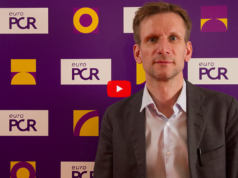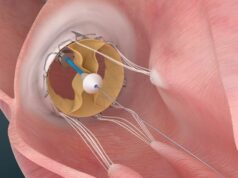
Valtech Cardio will present a symposium on mitral and tricuspid valve repair at the 2016 Transcatheter Cardiovascular Therapeutics conference (TCT) meeting (29 October–2 November, Washington, DC, USA). Additionally, updated two-year follow-up results of the multicentre Cardioband Mitral study and Cardioband Trucuspid initial experience will be presented by Karl-Heinz Kuck (director of Cardiology, Allegemienes Krankenhaus St Georg, Hamburg, Germany).
Overall, the TCT sessions in which Cardioband’s technologies will be discussed include:
Symposium: Clinical Reality for Mitral and Tricuspid Valve Repair; 1 November, 11.30am. Led by chairpersons Martin B Leon and Michael J Mack, with Paul A Grayburn and Azeem Latib as faculty, this session will cover a variety of topics designed to teach attendees how to perform mitral repair in patients with functional mitral regurgitation, including: percutaneous annuloplasty—another step towards surgical standards; 24-month results and future clinical studies; echo guidance—anatomy and physiology; how quick can you master Cardioband?; and Tricuspid repair with Cardioband.
Session: transcatheter mitral valve repair; 31 October, 12pm. Transcatheter annuloplasty system for mitral reconstruction multicenter trial (presentation by Kuck).
Session: emerging transcatheter repair devices for mitral regurgitation; 31 October, 2.14pm. Direct annuloplasty I: Cardioband TF trial results and future directions (presentation by. Francesco Maisano)
Session: emerging transcatheter repair devices for mitral regurgitation; 31 October, 2.50pm. Direct annuloplasty VI: cardiac implants (presentation by Kuck).
Kuck comments: “I look forward to sharing my experience with Cardioband Tricuspid and further discussing the benefits of trans venous direct annulospolasty procedures in tricuspid regurgitation patients. Cardioband has proven to be an excellent option for treating mitral patients, as demonstrated by the two-year study data presented at this meeting, and I am excited to see the technology’s application expanding to tricuspid regurgitation patients”.










